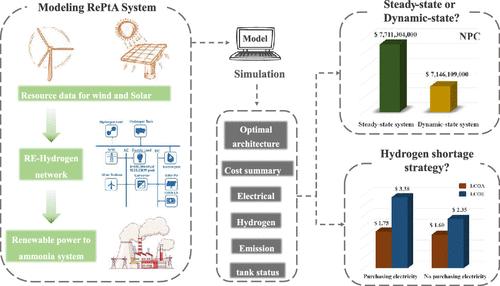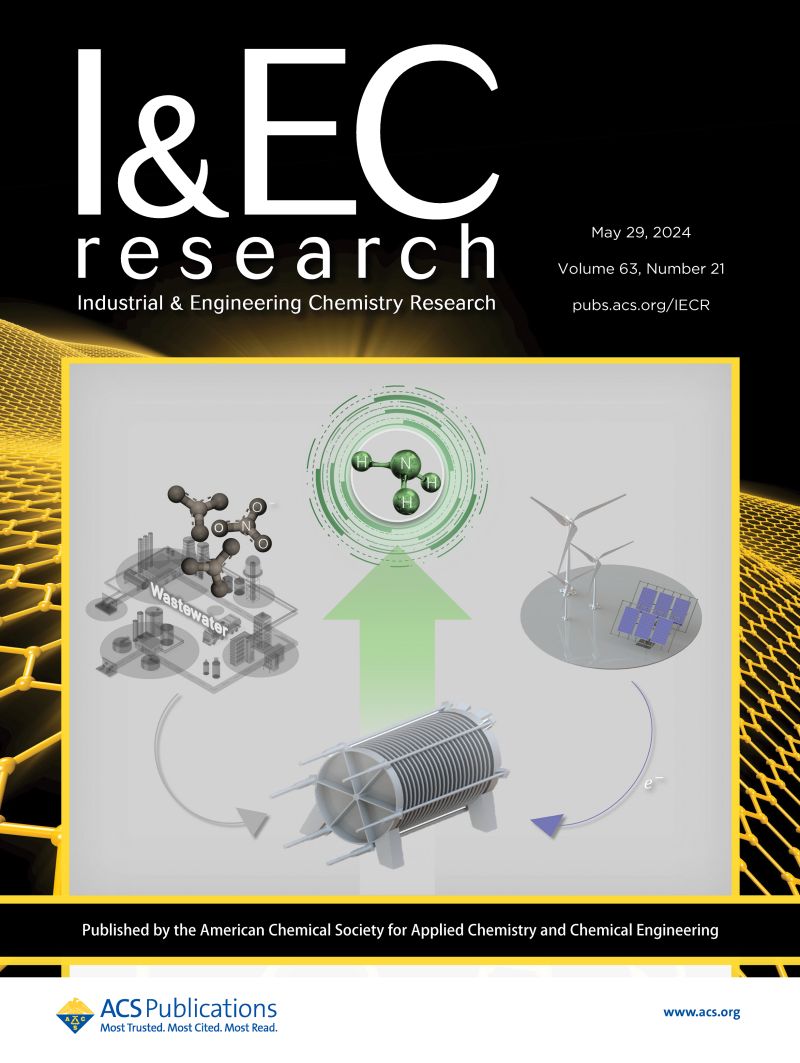Techno-Economic Optimization of the Renewable Power to Ammonia System Based on a Flexible Process
IF 3.8
3区 工程技术
Q2 ENGINEERING, CHEMICAL
引用次数: 0
Abstract
With the increasing depletion of fossil energy and the environmental pollution caused by its combustion, renewable energy has entered a stage of rapid development, marking a new trend in the energy market and sustainable energy development. The renewable power to ammonia system (RePtA) offers significant potential and prospect to replace a large number of fossil fuel ammonia technologies. However, the RePtA system driven by renewable electricity will be under frequent dynamic operation due to the fluctuation of renewable energy. In this paper, combined with specific resource conditions and device scale in a certain area, this is utilized to construct a renewable energy to hydrogen network and integrate the renewable power to ammonia system. Comparing steady-state and dynamic-state to renewable power to ammonia systems, the levelized cost of energy (LCOE) is $0.64/kWh lower than the steady-state to ammonia system, and the levelized cost of ammonia (LCOA) is $0.12/kg lower. In light of the hydrogen shortage situation, purchasing electricity from the grid to ensure that the hydrogen load of the RePtA system meets the demand for ammonia production emerges as the optimal strategy in terms of production economy and stationarity, which reduces the energy cost by nearly $1.00/kWh and increases the annual profit by 20%. Finally, compared with the actual RePtA project at Inner Mongolia, Hydrogen tank capacity is more reasonable, and LCOA is reduced by 0.4$/kg; it is observed that the optimization is effective. This paper proposed that the techno-economic optimization of the renewable power to ammonia system based on a flexible process provides a theoretical basis for the implementation of large-scale green ammonia projects.

求助全文
约1分钟内获得全文
求助全文
来源期刊

Industrial & Engineering Chemistry Research
工程技术-工程:化工
CiteScore
7.40
自引率
7.10%
发文量
1467
审稿时长
2.8 months
期刊介绍:
ndustrial & Engineering Chemistry, with variations in title and format, has been published since 1909 by the American Chemical Society. Industrial & Engineering Chemistry Research is a weekly publication that reports industrial and academic research in the broad fields of applied chemistry and chemical engineering with special focus on fundamentals, processes, and products.
 求助内容:
求助内容: 应助结果提醒方式:
应助结果提醒方式:


